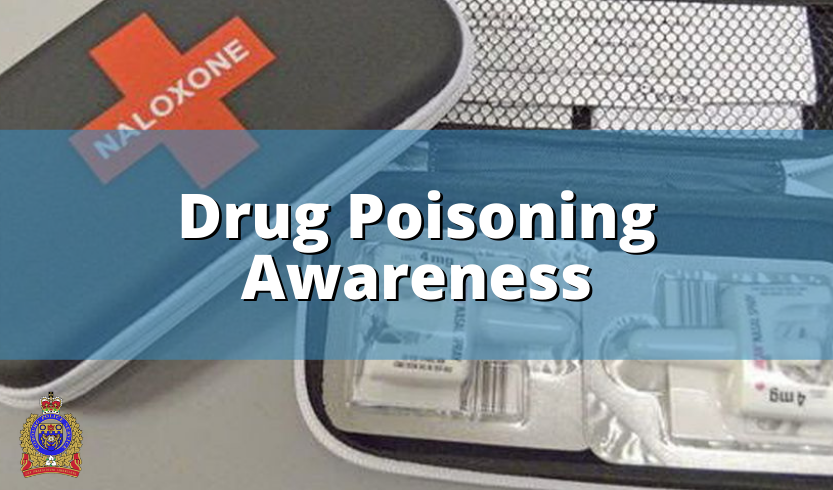
Cobourg is struggling to overcome the opioid overdose crisis occurring across Canada. During the first half of 2021, there were 44 calls for suspected drug poisoning. Of those, unfortunately, were two fatalities but on eight other calls Naloxone was administered —be it by an officer, a paramedic, or a citizen— which helped save lives.
From January 2016 until December 2020 there had been 21, 174 opioid toxicity deaths in Canada. Ontario, this past year alone, had approximately 2000 deaths from drug poisoning, many of which were accidental. When the borders closed due to the pandemic, drug supply became limited and dealers would often mix in other substances to make up the difference. This affects the expected potency and causes the drug user to have unexpected reactions… such as unintentionally overdosing.
Opioid-related deaths are preventable, like with those eight people in Cobourg, if you know what to do. The Government of Canada has established two ways of protecting the health of Canadians that are helping lower these growing mortality rates. One is the Good Samaritan Drug Overdose Act and the other is the Ontario Naloxone Program.
The Good Samaritan Act was created to encourage those who witness or are experiencing drug poisoning symptoms to call for emergency support without fear of reprisal. This Act provides some legal protection —such as against charges for possession— when dialling 911. More people are willing to remain with the victim of drug poisoning knowing they too will likely not be charged even if they are in possession of drugs or have taken drugs themselves.
Ontario’s Naloxone Program has proven to have some success when dealing with the opioid crisis as well. Various pharmacies across the province are providing NARCAN kits to friends and family members or even drug users themselves. This medication can temporarily reverse an overdose by blocking the effects of opioids. Naloxone is fast-acting, though not long-lasting, and gives paramedics more time to arrive.
More locally, Cobourg Police Service has decided to adjust the language they use when it comes to drug-related crises in the hope it will change perceptions and educate the public. They will be adopting phrasing similar to medical professionals who use the term “overdose” only for the action of ingesting more of a substance than one’s body can handle while “drug poisoning” is the effect this excessive amount has on the body and the reason why they get calls.
The stigma that surrounds terms like “overdose” and “addiction” is often what discourages drug users from seeking the help they need to overcome their addictions or obtain other medical assistance. That shame should not be placed on those suffering, and even dying, from drug poisoning —something that usually is not intentional.
With all of this in mind, CPS has also launched a summer pilot program called HARP (Homeless Addiction Resource Project) to work collaboratively with the community to increase knowledge and access to services for those who need it. There will be two uniformed officers dedicated to the downtown core focusing on issues related to addiction, homelessness, and mental health.
It is important for our community members to be able to identify the signs of drug poisoning. If you can recognize the symptoms and know how to help, you could be saving the life of someone’s parent, sibling, friend, or spouse.
Things to watch out for are:
- Pale cold skin
- Large or pinpoint pupils
- Blue lips or nails
- Difficulty breathing
- Choking or gurgling
- Slow heartbeat
- Limp limbs
- Drowsiness or inability to wake up
Should you suspect someone is suffering from an overdose, call 911 immediately and stay on the line. Check for dangers, such as needles, and if you have a NARCAN kit or another brand of Naloxone drug, administer it as directed. Make note of the time, and also tell the dispatcher on the phone. Help the person into a recovery position by rolling the person on their side if they are breathing independently.
Continue to monitor their breathing and, if there is no response from the person for three to five minutes, administer another dose of Naloxone and also record that time to inform the paramedics once they arrive.
Never leave the person who is suffering from drug poisoning alone nor allow them to eat or drink if they are conscious. As the effects of Naloxone are only temporary and only work for opioids, medical intervention will still be needed.
To find out how you can get your own kit, go to www.ontario.ca/page/get-naloxone-kits-free
